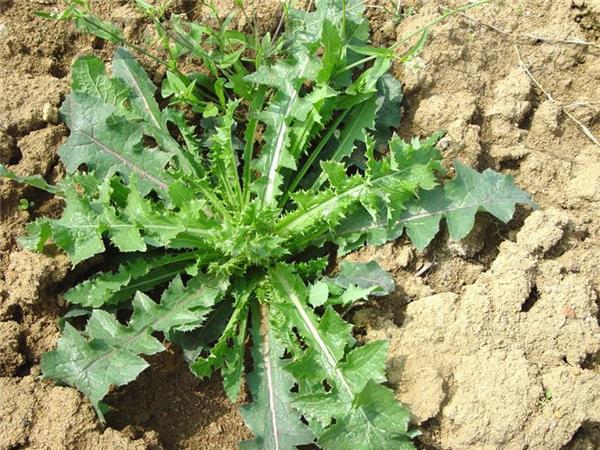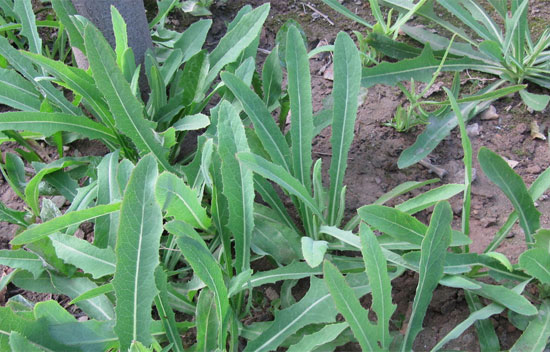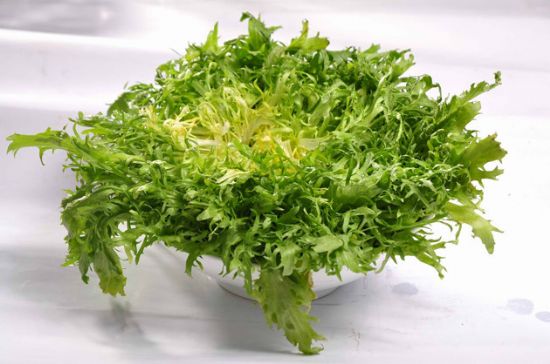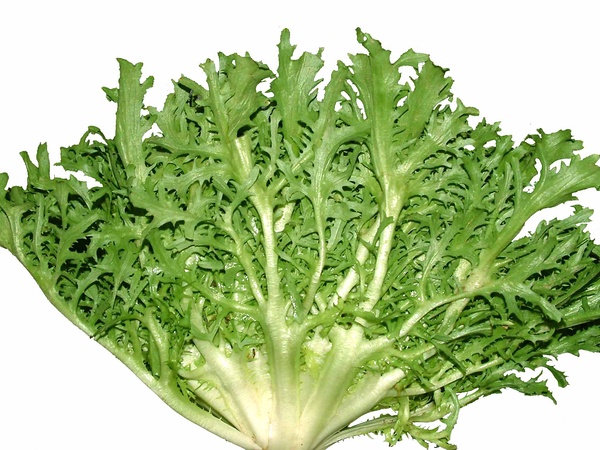How does bitter chicory eat bitter chicory and how to raise it?
The scientific name of bitter chicory is kudzu, since it is a vegetable, of course it can be eaten, and its nutritional value is very high. Today, let's take a look at the function and efficacy of bitter chicory, and how to cultivate it artificially.
1. What is bitter
Endive is a cultivated species of the genus Compositae that feeds on tender leaves and is a herbaceous plant in 2012. The scientific name Cichorium endivia L. contains 95.1 g moisture, 1.2 g protein, calcium 77mg and vitamins per 100 g tender leaves. Suitable for eating raw, cooking or making soup. Bitter chicory leaves lanceolate. Head, about 20 florets, Corolla lilac, pistil stigma bifurcate light blue, stamens 5, connected into a tube, anthers light blue. The seeds are short columnar, gray-white, and the 1000-seed weight is 1.6g. The germination ability of seeds can be maintained for 10 years, and seeds preserved for 1-3 years are often used in production.

Second, the nutritional composition of bitter chicory
Per 100g fresh bitter borage contains 1.8g protein, 4.0g sugar, 5.8g food fiber, 120mg calcium, 52mg phosphorus and trace elements such as zinc, copper, iron, manganese, as well as vitamin B1, B2 (0.2mg), C (88mg), carotene (3.22mg), nicotinic acid and so on. In addition, it also contains chemicals such as wax alcohol, choline, tartaric acid, picrin and so on. Bitter chicory contains vitamin C 88 mg and carotene 3.22 mg, which is 2.1 and 2.3 times higher than that in spinach. There are all kinds of amino acids in tender leaves of bitter chicory, and the proportion of all kinds of amino acids is appropriate.
III. Edible value of bitter chicory
Bitter borage is an excellent health food. The white pulp of bitter borage contains "chicory essence", resin, a lot of vitamin C and various flavonoids. It is said that eating foods containing bitter borage vegetables can prevent infections caused by a variety of bacteria or viruses and improve the body's immunity. Foreign countries have also developed a variety of bitter borage health food, including bitter chicory vegetable juice drinks, bitter chicory vegetable nutrition biscuits, bitter vegetable salad dressing and so on.

4. Examples of eating methods of bitter chicory
1. Bitter chicory with cold sauce
Wash and dry the chicory tree, cut it into sections and put in the dried shredded chili and aged vinegar, sugar, salt, monosodium glutamate, prickly ash oil, sesame oil, chilli oil, sprinkle with fried peanuts and mix well. The characteristics of this dish are: sweet, sour, bitter, spicy and salty.
two。 Tricolor chicory salad
Ingredients: 20 grams of Roman lettuce, 15 grams of chicory, 20 grams of purple leaf lettuce, 30 grams of magnolia.
Seasoning: purple chrysanthemum 20g, olive oil 5g, tarragon vinegar 5g, salt, walnut, shredded apple
Production method: 1. All kinds of lettuce are torn up and mixed with shredded apples and walnuts. two。 Mix the right amount of olive oil, tarragon vinegar and salt into a dipping sauce. 3. Decorate the plate with purple chrysanthemum.

Fifth, the culture method of bitter chicory
1. Planting: the cultivation season of bitter borage is mainly spring and autumn. Spring sowing should be as early as possible to prolong its vegetative growth period and harvest period. The seedlings can be raised in a hotbed and planted when there are 7-9 leaves, plant spacing 20cm, row spacing 30cm. Sowing in the open field is feasible for direct seeding, but seedlings are needed to facilitate plant growth. Autumn sowing can be divided into early autumn sowing and late autumn sowing. Sow in early autumn and harvest in winter of that year; sow in late autumn and harvest in March to April of the following year. However, when overwintering cultivation in cold areas in winter, it should be planted in sunny beds, greenhouses and other protective facilities.
two。 Field management: attention should be paid to watering, topdressing and weeding during the growth period. In the early stage of growth, it needs to be watered for 2 to 3 times, usually more in spring and less in autumn. According to the soil consolidation condition, combined with watering, the soil was ploughed and loosened. To the peak growth period, combined with watering, quick-acting nitrogen fertilizer was applied to promote leaf growth, increase and thicken, and improve yield and quality. In order to reduce the bitterness and make its quality tender, softening cultivation can be carried out. Any measures that can keep the leaves from light and keep them moderately dry can achieve the purpose of softening, such as transplanting plants to cellars, covering grass curtains, and so on.
3. Stay seed: most of the seeds are sown in autumn, prevent the cold and pass the winter, and transplant in the field with soil in spring, or leave the seeds after the seedlings on the spot. Usually, the row spacing of plants is 30cm. Bolting and flowering around June can achieve the purpose of fruiting and fullness.

Does this plant with unique taste but high nutritional value attract everyone's interest? If you want to eat your own healthy and environmentally friendly bitter chicory, take action immediately and raise a pot of bitter chicory by referring to the above knowledge.
Related
- Wuhan Hospital Iron Tree Blooming Result Was Instantly Frightened by the Gardener Master
- Which variety of camellia is the most fragrant and best? Which one do you like best?
- What is the small blue coat, the breeding methods and matters needing attention of the succulent plant
- Dormancy time and maintenance management of succulent plants during dormancy
- Minas succulent how to raise, Minas succulent plant pictures
- What are the varieties of winter succulent plants
- How to raise succulent plants in twelve rolls? let's take a look at some experience of breeding twelve rolls.
- Attention should be paid to water control for succulent plants during dormant period (winter and summer)
- Watering experience of twelve rolls of succulent plants
- Techniques for fertilizing succulent plants. An article will let you know how to fertilize succulent plants.



